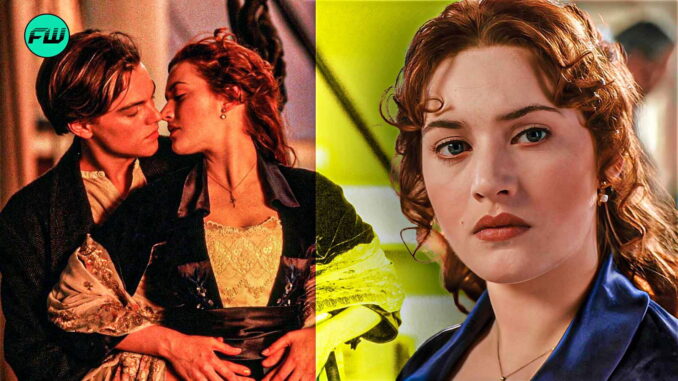
The image is iconic: Rose DeWitt Bukater, shivering and pale, clinging to a splintered door in the frigid expanse of the North Atlantic, while Jack Dawson, hypothermic and fading, clutches her hand in the icy grip of his dying moments. This scene, etched into the collective consciousness by James Cameron’s Titanic, is a masterful illusion of suffering. Yet, for one of its stars, the suffering was agonizingly real, extending far beyond the director’s cut. Kate Winslet’s commitment to embodying the chilling reality of the sinking, coupled with her bold refusal to wear a wetsuit in the extensively watery production, led her to contract a truly horrible medical condition: pneumonia.
Cameron’s vision for Titanic was an exercise in epic realism, a meticulous recreation of a historical catastrophe. This extended not just to the ship’s design but to the very environment of its watery demise. Massive tanks of unheated water, long night shoots, and the relentless drenching of the actors were not just set dressing; they were central to the immersive experience. Amidst this meticulously crafted, yet brutally cold, environment, Kate Winslet made a choice that would define her on-set experience and ultimately exact a steep personal toll.
Winslet, known for her intense dedication to her roles, reportedly viewed the wetsuit as a barrier to authenticity. She wanted to feel the bone-chilling cold that Rose would have endured, to experience the physical discomfort that would lend genuine vulnerability to her performance. It was a testament to her method acting, a commitment to inhabit the role so completely that the line between actor and character blurred. She was to be deluged, soaked, and frozen, all in the pursuit of a performance that would resonate with the audience’s deepest empathy. But the icy crucible of art exacted its inevitable toll.
The onset was insidious. What began as a persistent shiver, dismissed as part of the job, gradually morphed into something far more debilitating. Winslet, day after day, was submerged in cold water, sometimes for hours, her thin period costumes offering scant protection. The damp chill clung to her like a second skin, seeping into her joints, chilling her to the bone. The initial goosebumps gave way to uncontrollable tremors, a deep, persistent ache that transcended mere discomfort. Her body, constantly fighting off the cold, began to weaken.
Soon, the shivers were accompanied by a dry, hacking cough that escalated into racking spasms, making it difficult to catch her breath. Fatigue, heavy and pervasive, settled into her bones, turning simple movements into Herculean efforts. Her voice grew hoarse, her eyes weary, and a fever began to take hold, turning her skin clammy and her brow perpetually flushed. The initial bravado of her wetsuit refusal was replaced by a grim determination to simply get through each day. The diagnosis was unambiguous and alarming: pneumonia.
Pneumonia is no mere cold; it's a serious lung infection that causes the air sacs of the lungs to fill with fluid or pus, leading to difficulty breathing, fever, chills, and cough. For Winslet, the condition meant grappling with a persistent, agonizing cough that left her breathless and bruised, a fever that sapped her strength, and an overwhelming fatigue that made the demanding 16-hour workdays almost unbearable. The physical suffering was relentless, making it difficult to focus on her lines, let alone the nuanced emotional performance required of her. She was literally fighting for breath while portraying a character fighting for her life. The irony was not lost on her or the crew.
The ordeal extended beyond the immediate production. Winslet reportedly suffered from lingering lung issues and a persistent cough for months after filming wrapped. The "horrible medical condition" wasn't just a momentary inconvenience; it was a testament to the extreme physical demands placed on actors in the pursuit of cinematic perfection, and a stark reminder of the very real cost of "suffering for one's art."
Today, when we watch Titanic, mesmerized by Rose’s desperate struggle against the elements, we are seeing not just a performance, but the genuine residue of a performer’s sacrifice. Kate Winslet’s refusal to wear a wetsuit was a brave, if ill-advised, decision that ultimately imbued her portrayal with an authentic rawness. But it came at a significant personal cost, leaving her with the very real and debilitating experience of pneumonia – a grim, unseen companion to the unforgettable on-screen tragedy. Her ordeal serves as a potent illustration of the thin, often painful, line between artistic ambition and the fragile reality of the human body.
